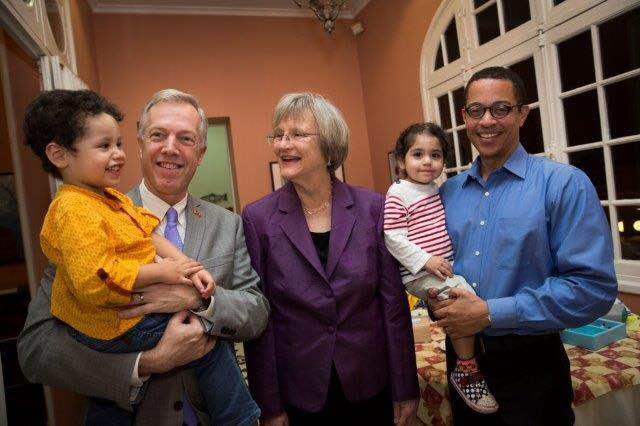'Honoring people who died' and Biên Hòa Cemetery
Both our societies live with ghosts, with memories, and with legacies. With the aftermath.—Drew Gilpin Faust, Harvard University President from remarks delivered on March 23, 2017, at the Hồ Chí Minh City University of Social Sciences and Humanities.
In her speech at the University of Social Sciences and Humanities in Hồ Chí Minh City, Drew Gilpin Faust— president of Harvard University, a historian of the American Civil War, and author of This Republic of Suffering: Death and the American Civil War —also discussed the difficulties in reconciling after that bitter divide: “We continue to struggle over the war’s meaning for the nation’s abiding racial divisions. Americans still battle over the use of the Confederate flag, the emblem of the would-be white southern nation that fought to preserve black slavery, a symbol that today is seen by most Americans as an affront and an obstacle to racial justice.”
Clayton and I hosted a dinner for President Faust the next night in Hanoi the night after her speech. As Aambassador, I too found myself dealing with the aftermath of a civil war, and I told her about my experiences with members of the Vietnamese American community in Southern California, Texas, Virginia, and Washington State. “Many members of that community have asked me about Biên Hòa cemetery near Hồ Chí Minh City,” I said.
“It’s an important place for many,” I explained, “because soldiers who fought for South Vietnam are buried there. Properly burying the dead, in their homeland, matters to the Vietnamese, whatever part of the country they come from. After I visited the cemetery, I asked that a U.S.-based NGO be permitted to fund its cleaning and maintenance. My requests have been denied. What should I do?”
Faust said that cemeteries “take on outsized meaning as symbols” and noted how long it took before Southern soldiers were buried at Gettysburg. She recommended that instead of talking about “The Dead,” with capital letters, that I speak about “honoring people who died.” I thought that Faust’s idea could be helpful as we continued to pursue reconciliation.
Deputy Foreign Minister Lê Hoài Trung was also at the dinner, and Faust’s observations led me to suggest to him that allowing the digging of ditches and the cutting of tree roots to clean up the cemetery and avoid the deterioration of the graves would be meaningful.
Faust said that after America’s Civil War, the victors ultimately concluded that reconciliation depended upon honoring each human being’s dignity, even in death. Biên Hòa Cemetery had become a potent symbol for those on the losing side of Vietnam’s civil war. A decision by the victors to allow the cemetery’s rehabilitation would therefore be meaningful. I wanted Vietnamese leaders in Hanoi to make this decision, but as ambassador, I had to step gingerly into this fraught and highly emotional territory.
----
From Nothing Is Impossible: America’s Reconciliation with Vietnam, by Ted Osius, to be published October 2021 in English by Rutgers University Press. If you want to receive further info about the book, please sign up with your email address.
Ambassador Ted Osius has written an illuminating, engaging and often moving story of the quarter century he has dedicated to helping the United States and Vietnam overcome their painful past. It is a narrative of political, economic, environmental and educational policies, of cultures and traditions, of losses and memories, of the lingering devastation of war and the commitment to work for reconciliation and peace. -- Drew Faust, former President of Harvard University.
OTHER NEWS
